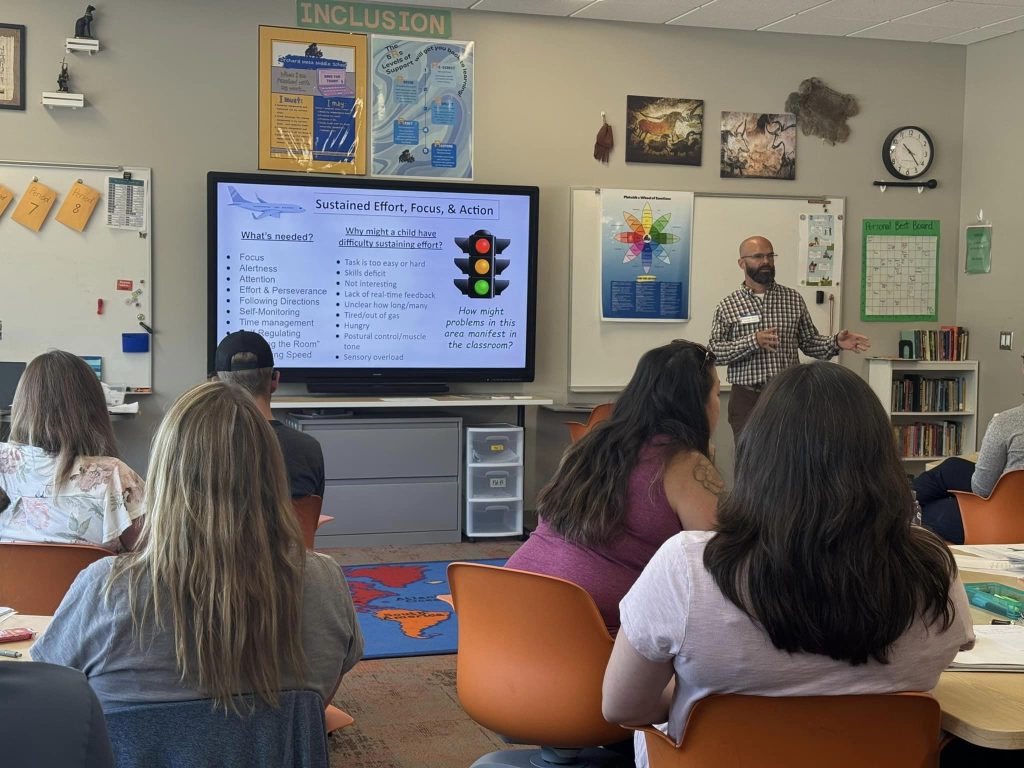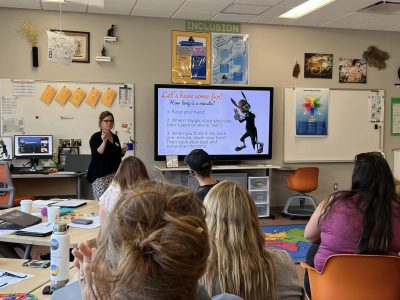“I love deadlines. I like the whooshing sound they make as they fly by.” – Douglas Adam
We recently had the pleasure of delivering a 2-day presentation to Mesa County Valley School District’s (D51) Summer Institute series on training teachers about executive function and ADHD in the classroom. This was a fun, hands-on, interactive couple of days spent learning, sharing, and supporting teachers with the amazing work they do.
Day 1 focused on “Building Executive Function Skills for Successful Learning.” Day 2 included a segment by Dr. Katen about ADHD: what it is, how it is clinically assessed and diagnosed, and what teachers can do in the classroom to support children with ADHD (as well as their classmates).
Based on teacher feedback, these were the major takeaways from last week’s training:
Executive Functioning (EF) – Day 1
1) EF is not just one “function” or deficit – it is a group of overlapping cognitive skills and abilities that support goal-oriented actions. Every task and activity have a beginning, middle, and end – and EF is necessary to support each of these phases.
2) EF deficits are “can’ts” – not “won’ts.” These skills and abilities are part of every student’s neurodevelopment, and they are learned over time. All of us have some delays in EF, but when significant, these impact learning, behavior, and classroom management.
3) Our belief about why someone behaves the way they do determines our emotional reaction to that behavior, which in turn shapes how we respond. This is a principle of the “attribution theory.” Once we understand that EF deficits in children are neurodevelopmental (not behavioral), we can shift from an emotional response to a skill-building mindset.
4) “Play” is the most effective means of developing EF skills. Since EF is primarily learned in childhood, it is vital that young students have lots of opportunity to move, socialize, explore, and have fun.
5) Transitions occupy as much as 40% of instructional time in school. Difficulty with shifting (from one activity, setting, or problem-solving strategy to another) is one of the most common and disruptive EF deficits in the classroom.

Attention-Deficit/Hyperactivity Disorder (ADHD) – Day 2
1) ¼ of children with ADHD have anxiety. Also, ¼ of children with anxiety have ADHD.
2) ADHD is a brain condition – not a behavioral disorder. While the symptoms of ADHD may appear behavioral, the cause is neurocognitive.
3) Every individual’s ADHD profile is as unique as their fingerprints. As Dr. Katen often says, “When you’ve seen one child with ADHD, you’ve seen one child with ADHD.”
4) An ADHD diagnosis does not mean a child must (or should) be medicated.
5) A thorough ADHD evaluation goes beyond parent and teacher checklists to include cognitive/IQ testing.
6) A clinical diagnosis of ADHD is not the same an educational classification of ADHD. The first involves diagnosis of a neurodevelopmental disorder by a psychologist, therapist, or medical doctor. The second is determined by the school based on the child’s behavior and needs within the classroom.
Thanks to D51 and the wonderful, talented group of teachers in attendance, as well as to Essentials in Learning for teaming up with us to deliver this training! We had a great time, learned a lot, and look forward to future collaboration.
©2024 Individual Matters, LLC. All rights reserved. Permission is granted to share this article with others, as well as to print or post it on other websites, so long as credit is given to the author.


 Kids Stop Asking Questions
Kids Stop Asking Questions